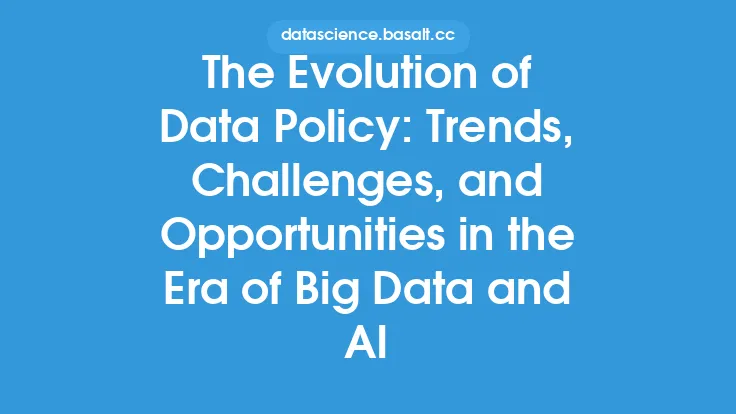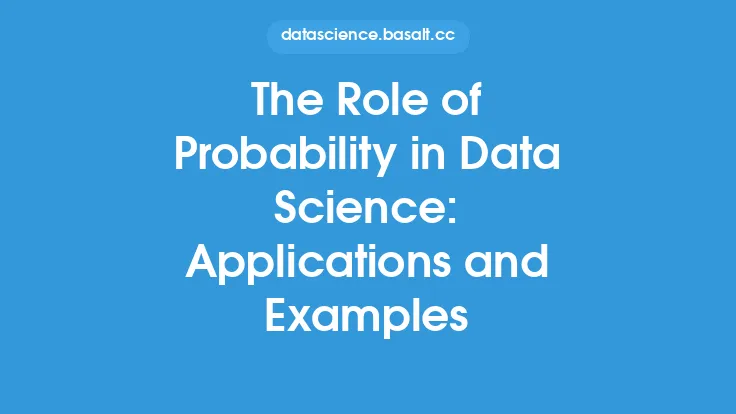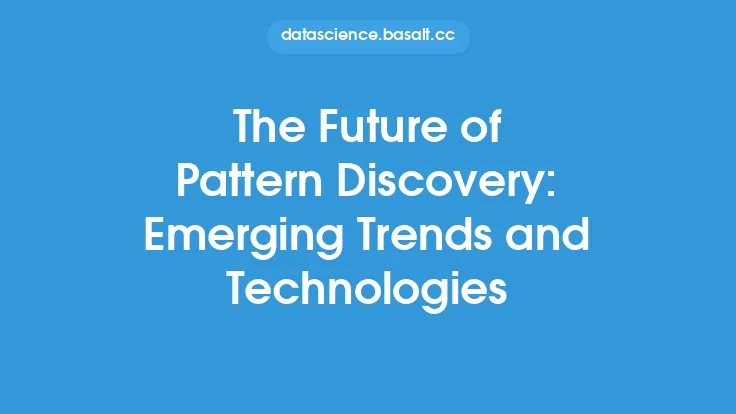The concept of deep learning has been around for several decades, with its roots in artificial neural networks. The term "deep" refers to the number of layers in a neural network, which is a key factor in determining its ability to learn and represent complex patterns in data. In the early days of artificial intelligence, researchers were inspired by the structure and function of the human brain, and they sought to create machines that could mimic its abilities.
Introduction to Artificial Neural Networks
Artificial neural networks (ANNs) are computational models that are inspired by the structure and function of the human brain. They consist of layers of interconnected nodes or "neurons," which process and transmit information. Each node applies a non-linear transformation to the input data, allowing the network to learn and represent complex patterns. The first artificial neural network was proposed by Warren McCulloch and Walter Pitts in 1943, and it was based on a simple model of the human neuron. However, it wasn't until the 1950s and 1960s that ANNs began to be developed and applied to real-world problems.
The Perceptron and the Birth of Deep Learning
In 1958, Frank Rosenblatt introduced the perceptron, a type of artificial neural network that was capable of learning and classifying patterns. The perceptron was a single-layer network that used a simple threshold function to make decisions. However, it was soon discovered that the perceptron had limitations, and it was not capable of learning complex patterns. In the 1960s, researchers began to explore the idea of multi-layer neural networks, which would later become the foundation of deep learning. One of the key challenges in developing multi-layer networks was the problem of training, which involved adjusting the weights and biases of the nodes to minimize the error between the predicted output and the actual output.
The Backpropagation Algorithm
In the 1980s, a breakthrough was made with the introduction of the backpropagation algorithm, which is still widely used today. Backpropagation is a method for training multi-layer neural networks by minimizing the error between the predicted output and the actual output. It works by propagating the error backwards through the network, adjusting the weights and biases of the nodes at each layer. The backpropagation algorithm was first introduced by David Rumelhart, Geoffrey Hinton, and Ronald Williams in 1986, and it has since become a standard tool in the field of deep learning.
The Rise of Deep Learning
In the 1990s and 2000s, deep learning began to gain momentum, with the introduction of new techniques and algorithms. One of the key factors that contributed to the rise of deep learning was the availability of large amounts of data and computational power. With the advent of the internet and the proliferation of digital devices, vast amounts of data became available, which could be used to train and test deep learning models. At the same time, advances in computer hardware and software made it possible to train large neural networks quickly and efficiently.
Convolutional Neural Networks and Recurrent Neural Networks
Two of the most important types of deep learning models are convolutional neural networks (CNNs) and recurrent neural networks (RNNs). CNNs are designed to process data with spatial hierarchies, such as images, and they have been widely used in applications such as image classification and object detection. RNNs, on the other hand, are designed to process sequential data, such as speech or text, and they have been widely used in applications such as language modeling and machine translation. Both CNNs and RNNs have been instrumental in the development of deep learning, and they continue to be widely used today.
Deep Learning in the Modern Era
Today, deep learning is a rapidly evolving field, with new techniques and applications being developed all the time. One of the key areas of research is in the development of new neural network architectures, such as residual networks and attention-based networks. Another area of research is in the development of new training methods, such as generative adversarial training and reinforcement learning. Deep learning has also been applied to a wide range of real-world problems, including computer vision, natural language processing, and robotics.
The Future of Deep Learning
As deep learning continues to evolve, we can expect to see new and exciting developments in the field. One of the key areas of research is in the development of more efficient and scalable training methods, which will enable the training of even larger and more complex neural networks. Another area of research is in the development of new applications, such as autonomous vehicles and personalized medicine. Deep learning has the potential to revolutionize many areas of our lives, and it will be exciting to see how it continues to develop and evolve in the years to come.
Challenges and Limitations
Despite the many advances that have been made in deep learning, there are still many challenges and limitations to be addressed. One of the key challenges is in the development of more robust and generalizable models, which can perform well in a wide range of environments and scenarios. Another challenge is in the development of more efficient and scalable training methods, which can handle the vast amounts of data that are required to train deep learning models. Additionally, there are concerns about the interpretability and explainability of deep learning models, which can be difficult to understand and interpret.
Conclusion
Deep learning has come a long way since its inception, and it has revolutionized many areas of artificial intelligence and machine learning. From its roots in artificial neural networks to the modern era of convolutional and recurrent neural networks, deep learning has evolved significantly over the years. As the field continues to evolve, we can expect to see new and exciting developments, including more efficient and scalable training methods, new applications, and more robust and generalizable models. Despite the challenges and limitations, deep learning has the potential to transform many areas of our lives, and it will be exciting to see how it continues to develop and evolve in the years to come.





